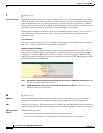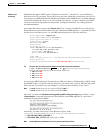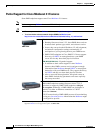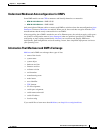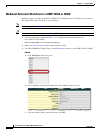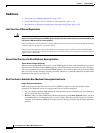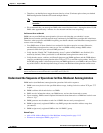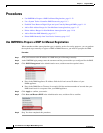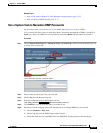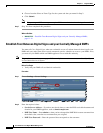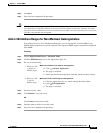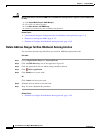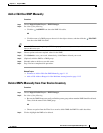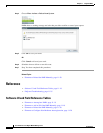
11-11
User Guide for Cisco Digital Media Manager 5.2.x
OL-15762-03
Chapter 11 Register DMPs
Concepts
• Therefore, you should plan to stagger the start times by at least 35 minutes apiece when you schedule
DMP autoregistration tasks that will search multiple subnets.
Note In a very large network that contains thousands of DMPs, the necessary interval might be longer than
35 minutes.
•
We recommend that you autoregister DMPs after normal business hours. Autoregistration of 5,000
DMPs takes approximately 4 minutes in a fast network and does not use polling.
Set Events to Recur as Needed
DMM runs any non-Medianet autoregistration job once each time that you schedule it to run.
DMM does not scan the specified network range continuously for DMPs that you might add in the future.
Therefore, when you plan to add DMPs frequently, you should schedule a non-Medianet autoregistration
event to recur accordingly.
• Your DMPs must all share identical user credentials for their respective accounts. Otherwise,
non-Medianet autoregistration cannot occur. Nor can DMM centrally manage DMPs whose
passwords differ from your universal DMP password.
• Verify that the “Enable TAC Troubleshooting Access” option in DMPDM is not disabled. (It is
enabled by default.) When you disable it, non-Medianet autoregistration cannot occur.
• Verify that the routers, switches, and firewalls between your DMM appliance and the CIDR address
range for non-Medianet autoregistration allow TCP port 7777 to send and receive packets. Verify also
that ICMP (ping) traffic is allowed to pass from your DMM appliance to your DMPs on this port. When
any of this traffic is blocked anywhere along its route, non-Medianet autoregistration cannot occur.
Caution You can stop untrusted DMM appliances from seizing control of your DMPs. Simply configure your network firewall to
restrict which devices can send inbound traffic to your DMPs over TCP port 7777.
Understand the Sequence of Operations for Non-Medianet Autoregistration
DMM-native (non-Medianet) autoregistration operations follow this sequence.
1. DMM scans every device in the specified address range, looking for devices where TCP port 7777
is open.
2. DMM confirms which such devices are DMPs.
3. DMPs receive information about your DMM server, and are then instructed to restart.
4. Upon restarting, DMPs transmit updated information about themselves to DMM and set their own
status to “Up.”
5. DMM generates new database records for all DMPs that are newly autoregistered.
6. DMM assigns newly registered DMPs to any DMP groups that match the address range that
you entered.
7. DMM assigns newly registered DMPs to the “All DMPs” group.
Related Topics
• Add or Edit Address Ranges for Non-Medianet Autoregistration, page 11-15
• Elements to Autoregister DMPs, page 11-19




